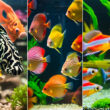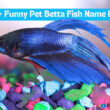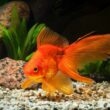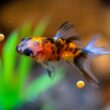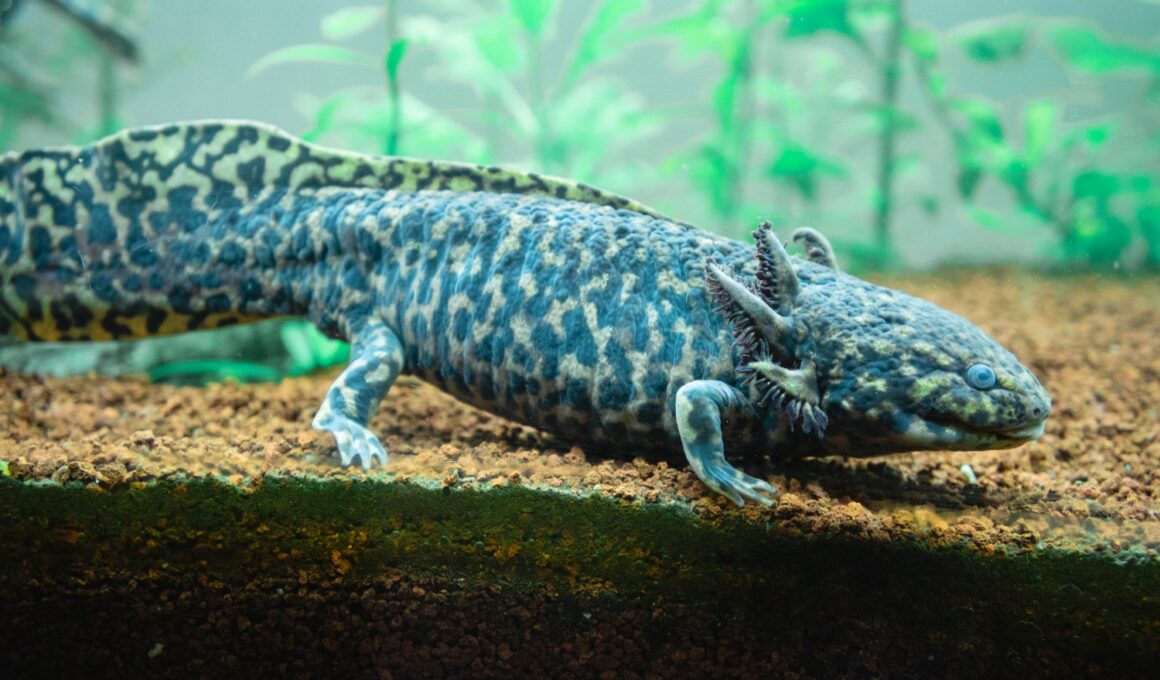In this article Show
If you’re looking to venture beyond the typical goldfish and angelfish, you might want to consider the axolotl. Also known as the “Mexican walking fish” (even though it’s actually an amphibian), the axolotl is a unique and fascinating creature that can bring a touch of the extraordinary to your home aquarium.
But, like any pet, axolotls require specific care to keep them happy and healthy. In this comprehensive guide, we’ll dive into everything you need to know about axolotl care—from setting up the perfect tank environment to understanding their dietary needs and much more.
Whether you’re a seasoned fish keeper like me or new to the world of aquatic pets, this guide aims to give you the essential information you need to become a responsible axolotl owner. So let’s get started, shall we?
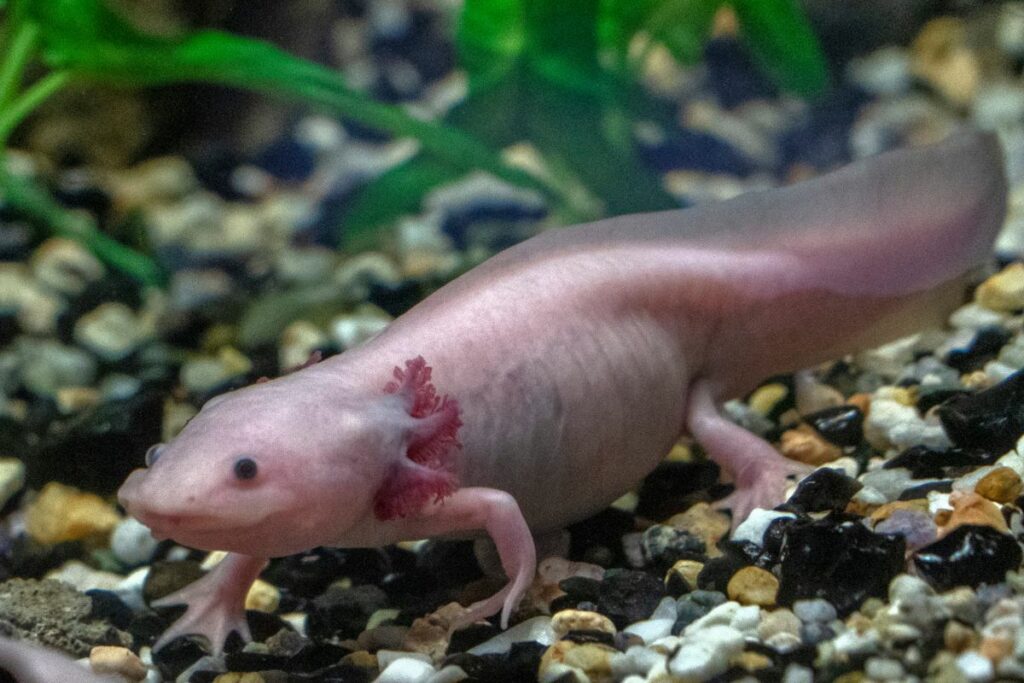
Understanding the Axolotl
You need to understand the dynamics of Axolotls to be able to properly take care of them.
1. Origin and Natural Habitat
The axolotl hails from the lake systems around Mexico City, specifically Lake Xochimilco and Lake Chalco, though sadly, they’re nearly extinct in the wild now. The water in their natural habitat tends to be on the cooler side and well-oxygenated, a crucial detail you’ll want to replicate in your own tank setup.
2. Physical Characteristics
At first glance, an axolotl might look like something out of a fantasy novel. With their fringed gills and lizard-like tails, these aquatic critters are instantly captivating. They usually measure between 6 to 18 inches in length and can come in various colors, including wild, leucistic (similar to albino), albino, golden albino, and even melanoid.
3. Personality Traits
Don’t let their exotic appearance fool you; axolotls are surprisingly low-key. They’re mostly sedentary, spending a lot of time hovering near the bottom of their tank.
While they don’t engage in elaborate social behaviors, they do have a certain level of curiosity, especially when it comes to food. You might notice them coming up to the glass when you approach, often in anticipation of a meal.
Understanding an axolotl’s natural habitat, physical characteristics, and personality traits is essential in providing proper care. Knowing what makes them tick can go a long way in ensuring that your axolotl lives a happy, healthy life in your home aquarium.
Preparing for an Axolotl: What You’ll Need
Before diving into axolotl ownership, it’s essential to prepare your home and budget for this unique pet. You wouldn’t take a fish home without a tank, right? The same preparation is needed for an axolotl. Let’s get into the nitty-gritty of what you’ll need.
1. Basic Equipment List
- Tank: A minimum of a 20-gallon tank for one axolotl. Remember, bigger is usually better.
- Filtration System: A gentle filter that doesn’t produce strong currents. Axolotls are not fans of turbulent water.
- Aquarium Thermometer: To monitor the water temperature, which should ideally be between 60-64°F (15-18°C).
- Water Conditioner: To remove chlorine and other harmful chemicals from tap water.
- Substrate: Fine sand or bare bottom are your best bets. Avoid gravel, as axolotls might ingest it, leading to health issues.
- Decorations: Plants (real or fake) and hiding spots, but ensure they have no sharp edges.
- Lighting: Optional, but if used, should be low intensity.
- Test Kits: For monitoring pH, ammonia, nitrites, and nitrates in the water.
- Food: Live or frozen foods like bloodworms, earthworms, and brine shrimp are excellent choices.
2. Budget Considerations
Let’s be honest, setting up an aquarium isn’t pocket change. Between the tank, filter, and ongoing costs like food and water treatments, you should expect to spend a few hundred dollars upfront.
However, once the initial setup is done, the maintenance cost is relatively low, around $20-$30 a month for food and water conditioners. By preparing adequately and budgeting for these necessities, you’ll set the stage for a thriving axolotl habitat.
Trust me, putting in the time and resources upfront pays off with a happy, healthy pet in the long run.
3. Tank Setup and Environment
Setting up a proper tank environment is a crucial step in axolotl care. Unlike some other aquatic pets, axolotls have specific requirements that can’t be overlooked. So let’s get right into it.
4. Ideal Tank Size
Size matters when it comes to axolotl tanks. For a single axolotl, a 20-gallon tank is the bare minimum, but I strongly recommend going larger if you have the space. If you plan on having more than one axolotl, you’ll need to add an extra 10 gallons for each additional critter.
5. Water Parameters
Axolotls are a bit finicky about water conditions. Maintain the water temperature between 60-64°F (15-18°C). Any significant deviations can stress them out. Likewise, aim for a pH level between 6.5 and 8.0.
6. Filtration and Aeration
Since axolotls are prone to produce a lot of waste, a good filtration system is a must. However, choose a filter that creates minimal water current. Axolotls aren’t fans of strong currents—they prefer calm waters. Some owners opt for sponge filters due to their gentle filtration and aeration capabilities.
7. Substrate and Decorations
When it comes to substrate, go with fine sand or even a bare-bottom tank. Gravel is a no-go because axolotls might ingest it and suffer from blockages.
Decorations like plants and hiding spots can make your axolotl feel more at home. Just make sure there are no sharp edges that could injure your pet. PVC pipes and ceramic pots can serve as good hideaways.
Remember, your goal is to mimic the axolotl’s natural habitat as closely as possible. When you get the tank environment right, you set the stage for your axolotl to live a comfortable, healthy life.
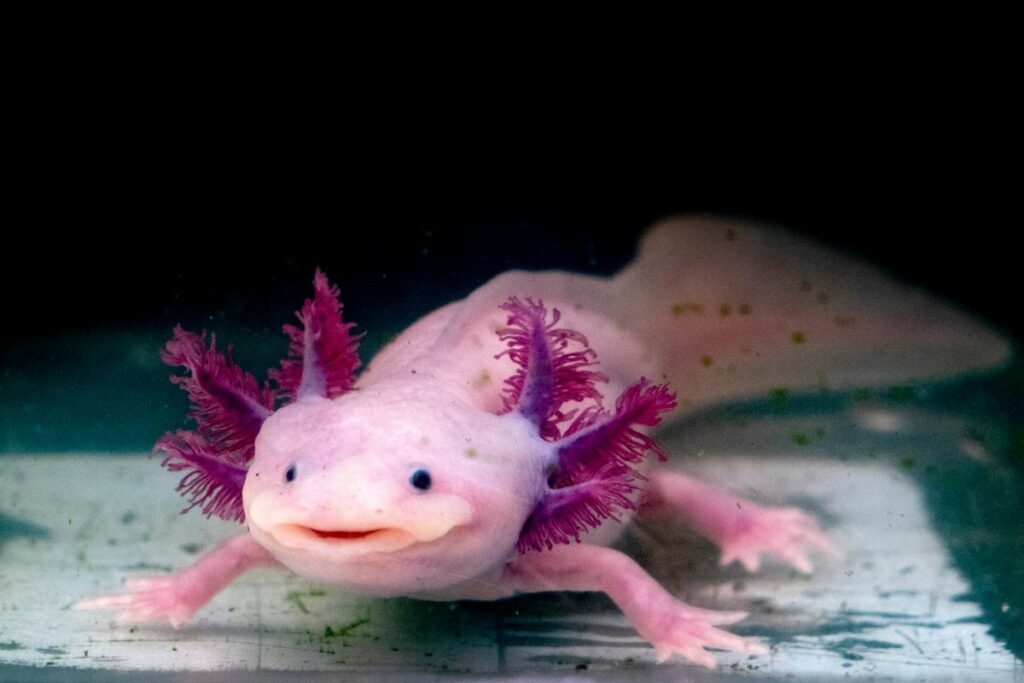
Diet and Nutrition
Feeding your axolotl the right kind of food is crucial for its overall well-being. These little guys are carnivores, and their diet in captivity should reflect what they’d eat in the wild. Let’s break down the nutritional needs of your axolotl.
1. Types of Food Axolotls Eat
- Live Foods: Earthworms are a top pick and can serve as a staple in the diet. Bloodworms are another option, but they’re better suited as a treat rather than a primary food source.
- Frozen Foods: If live food sourcing is a challenge, frozen bloodworms or brine shrimp are viable alternatives. Just be sure to thaw them out before feeding.
- Pellets: Some axolotl-specific pellets are available in the market, but these should only supplement live or frozen foods, not replace them.
2. Feeding Schedule
Axolotls under six months should be fed once a day, while adults are usually fine with 3-4 feedings per week. Overfeeding can lead to obesity and water quality issues, so it’s essential to find a balanced feeding schedule.
3. Tips for Balanced Nutrition
- Variety: A mix of different food types ensures a balanced diet, so don’t rely on just one food source.
- Portion Control: A good rule of thumb is to offer food that’s about the size of the axolotl’s head. If you notice uneaten food in the tank, you’re probably feeding too much.
- Water Quality: Always remove any uneaten food to maintain water quality. Leftover food can decay and negatively affect the water parameters.
In summary, a balanced diet is key to a healthy axolotl. A combination of live, frozen, and occasional pellet foods can provide the nutrients your axolotl needs for a long and healthy life.
Health and Lifespan
A well-cared-for axolotl can be a long-term companion, living up to 15 years or more in captivity. However, like all pets, they’re susceptible to certain health issues. Let’s discuss how to identify and prevent these problems, and what a healthy lifespan looks like for an axolotl.
Common Health Issues
Fungal Infections: Usually indicated by white, cotton-like patches on the skin. Often due to poor water quality.
- Impaction: This happens when axolotls eat gravel or other indigestible materials. Signs include a lack of appetite and difficulty passing waste.
- Ammonia Poisoning: Signs include lethargy and loss of appetite. Often a result of poor water quality or a lack of adequate filtration.
Signs of a Healthy Axolotl
A healthy axolotl will be alert and responsive, particularly around feeding times. Consistent eating habits are usually a good indicator of health.
Daily and Weekly Care Routine
Once your axolotl is settled in its new home, establishing a routine will help ensure its well-being and simplify your own schedule. Trust me, a little effort goes a long way. Here’s a breakdown of daily and weekly care tasks to keep your axolotl happy and healthy.
Daily Care
- Feeding: Depending on the age of your axolotl, you’ll either be feeding daily (for younger ones) or 3-4 times a week (for adults).
- Temperature Check: Quick glance at the aquarium thermometer to ensure the water is in the 60-64°F range.
- Visual Inspection: Take a moment to observe your axolotl’s behavior, skin condition, and general health.
- Remove Uneaten Food: Any leftover food should be promptly removed to maintain water quality.
Weekly Care
- Water Tests: Using a water test kit, check the levels of pH, ammonia, nitrites, and nitrates. Make adjustments as needed.
- Partial Water Change: Replace about 20% of the tank water with fresh, dechlorinated water. This is crucial for maintaining optimal water conditions.
- Filter Maintenance: Inspect and clean the filter to ensure it’s functioning properly. Avoid using soap or detergents—hot water will do the trick.
- Tank Cleaning: Siphon out any waste or debris at the bottom of the tank. If you’re using a substrate like sand, gently sift through it to remove waste.
- Equipment Check: Ensure that all equipment, including the heater if you’re using one, is functioning as it should.
Staying consistent with these care routines will not only make your life easier but also provide your axolotl with a stable and healthy living environment. It’s a win-win situation if you ask me!
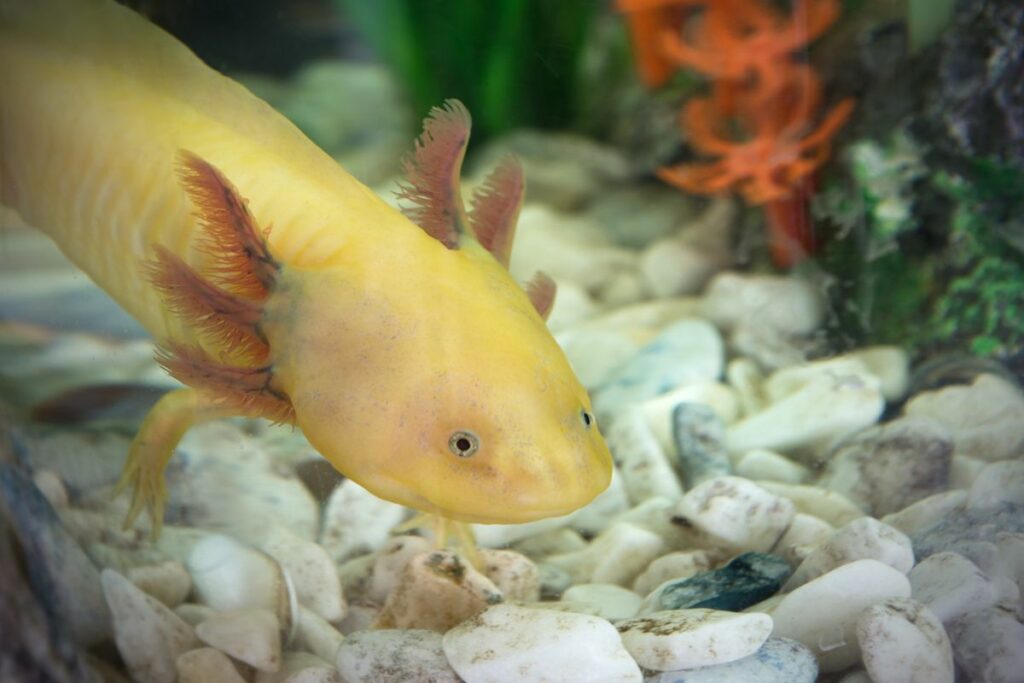
Social Behavior and Compatibility
So, you’ve got one axolotl and are thinking about adding another—or perhaps even a different species—to the mix? Hold that thought. Understanding an axolotl’s social behavior and compatibility with other aquatic creatures is crucial before making any new additions.
1. Axolotl-to-Axolotl Interaction
- Same-Species Cohabitation: Axolotls are generally tolerant of their own kind but keep an eye out for aggressive behavior, especially during feeding times.
- Space Requirements: If you’re planning on multiple axolotls, remember to increase your tank size by at least 10 gallons per additional axolotl.
- Sexual Maturity: If you have both male and female axolotls, be prepared for the possibility of breeding. This also requires separate rearing tanks for the young.
2. Compatibility with Other Species
- Fish: Not recommended. Fish may nip at the axolotl’s gills, and the axolotl might see smaller fish as food.
- Snails or Shrimp: Generally okay, as they can help with tank cleaning. However, remember that they might become a snack for your axolotl.
- Other Amphibians: It’s best to avoid mixing axolotls with other amphibians due to differing care requirements and the potential for conflict.
3. Important Considerations
- Aggression and Stress: Keep an eye out for signs of stress or aggression, such as nipped gills, loss of appetite, or unusual hiding behavior.
- Isolation Tanks: Always have a backup isolation tank ready in case of sickness or conflict that requires separating your axolotls.
While axolotls are relatively tolerant of their own kind, mixing them with other species generally isn’t advisable. Their unique care requirements and risk of conflict make them best suited for species-specific tanks.
Additional Tips and Tricks
Owning an axolotl is a rewarding experience, but like any pet ownership, there’s always room for some extra hacks to make life easier for both you and your aquatic friend. Here are some additional pointers that might come in handy.
1. Handling and Interaction
Axolotls are more of a “look but don’t touch” pet. Handling can stress them out, so it’s best to limit it to necessary occasions like tank cleanings. Using tweezers can make feeding time more efficient and ensure that your axolotl is getting its food.
2. Temperature Control
If you’re having trouble maintaining a cooler tank temperature, especially in the summer, aquarium cooling fans can be a useful investment. To help maintain a stable temperature, consider using an insulated aquarium cover.
3. Lighting
Axolotls aren’t fond of bright lights. Using subdued lighting will make them more comfortable and less stressed. Mimic is a natural day/night light cycle to help regulate your axolotl’s biological clock.
4. Miscellaneous
Always quarantine new plants or decor for at least a week to minimize the risk of introducing parasites or diseases. Keep an emergency kit containing a de-chlorinator, an extra heater, and a backup filter. You never know when you might need it.
Arming yourself with these extra tips and tricks can make your axolotl care routine more streamlined and may also enrich your pet’s life. After all, it’s the little things that often make the biggest difference.
Conclusion
Owning an axolotl is a unique and rewarding experience, but it does come with its set of responsibilities. From tank setup and diet to social behavior and routine care, each aspect plays a vital role in your pet’s well-being.
By adhering to these guidelines, you’re setting the stage for your axolotl to lead a healthy, happy life that could last up to 15 years or more. Happy axolotl keeping!


